Athens Hash does the
Nemean Games
Ancient Stadium of Nemea, Peloponnesos, Greece
Saturday 23rd June 2012
(These
games only take place every 4 years)
(More info at http://nemeangames.org
& http://en.wikipedia.org/wiki/Nemea)
Photos by Mad Dog & Wendy
OFFICIAL SCHEDULE OF EVENTS:
Saturday, June 23
8 a.m. First race in stadium for the most senior men.
Races follow in groups of twelve by gender and age throughout day.
4:30 p.m. Runners in “Footsteps of Herakles” assemble at stadium entrance
6 p.m. Start of “Footsteps of Herakles” race from the Temple of Herakles in Ancient Kleonai
7:30 p.m. Crowning ceremonies for victors
9 p.m. Closing ceremony with flame on altar extinguished by Nemean earth
10 p.m Reception in courtyard of local school
(1) THE STADIUM
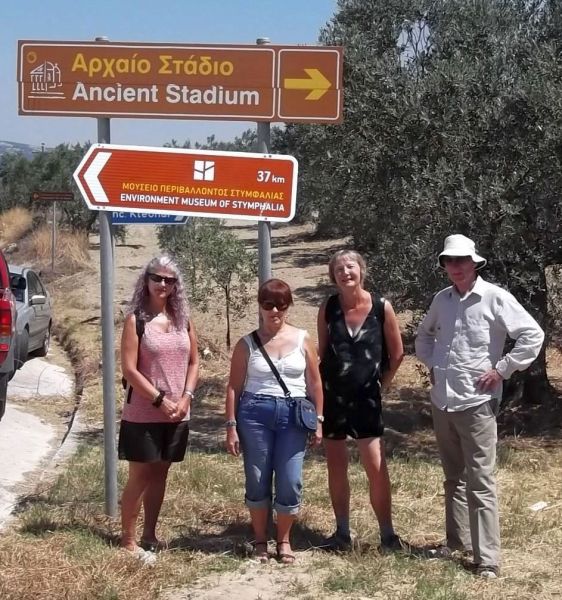
A car-load of us arriving at midday

Panoramic view of the ancient stadium >>>> Scroll right >>>>>

View of the ancient stadium of Nemea & the surrounding green hills
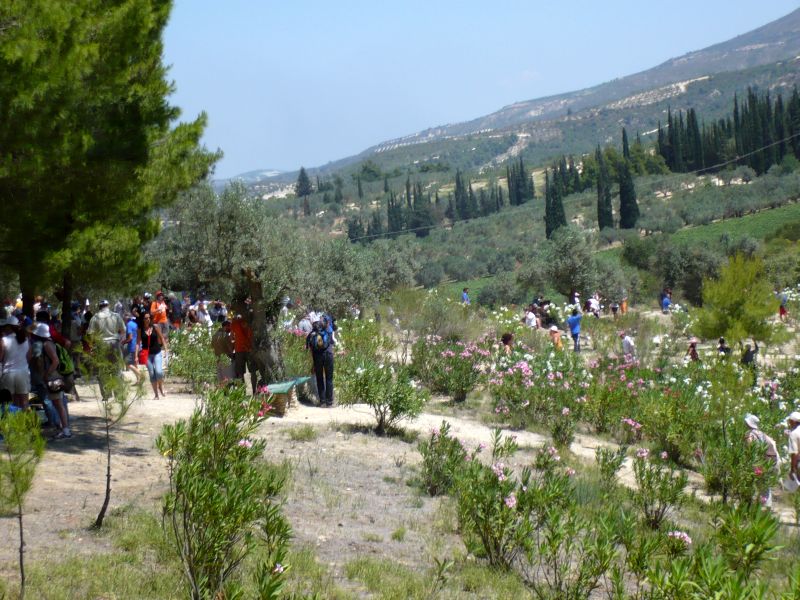
Onlookers find shade under the trees and bushes

All participants nation flags at the end of the stadium
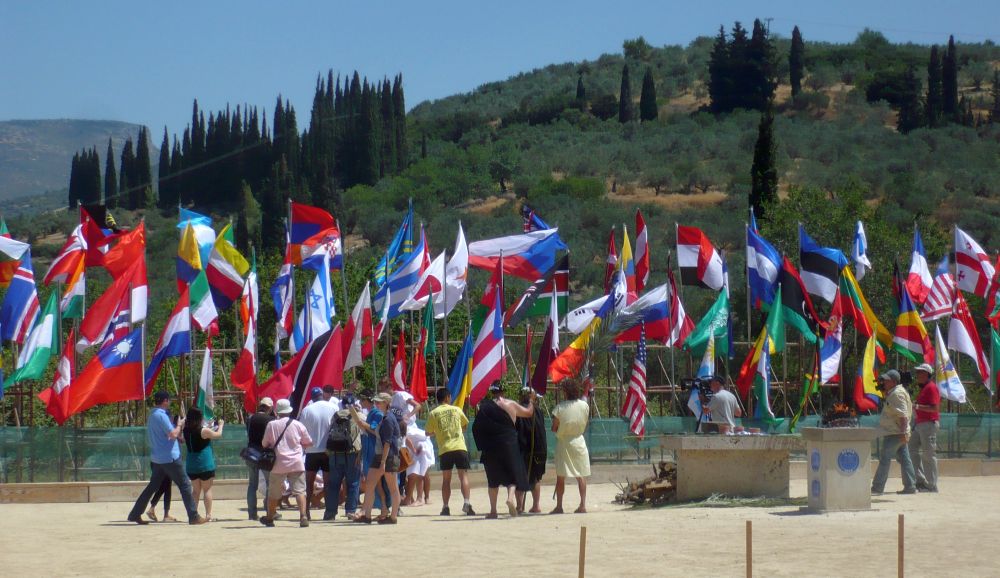
Flags and stone awards table

Close-up of awards table & palm fronds on the ground

Wendy with official & holding brass helmet containing numbered slips

Officials wait for runners to appear from the tunnel
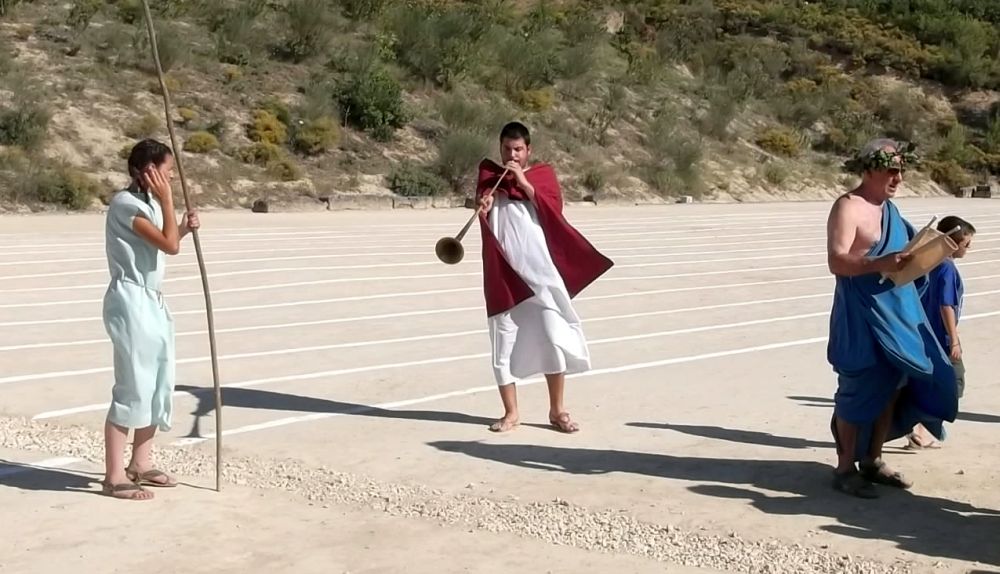
A trumpeter summons the next group of runners and an official calls out their names

The group of runners emerge from the tunnel into the stadium

The starting line mechanism (identical to the ancient original)
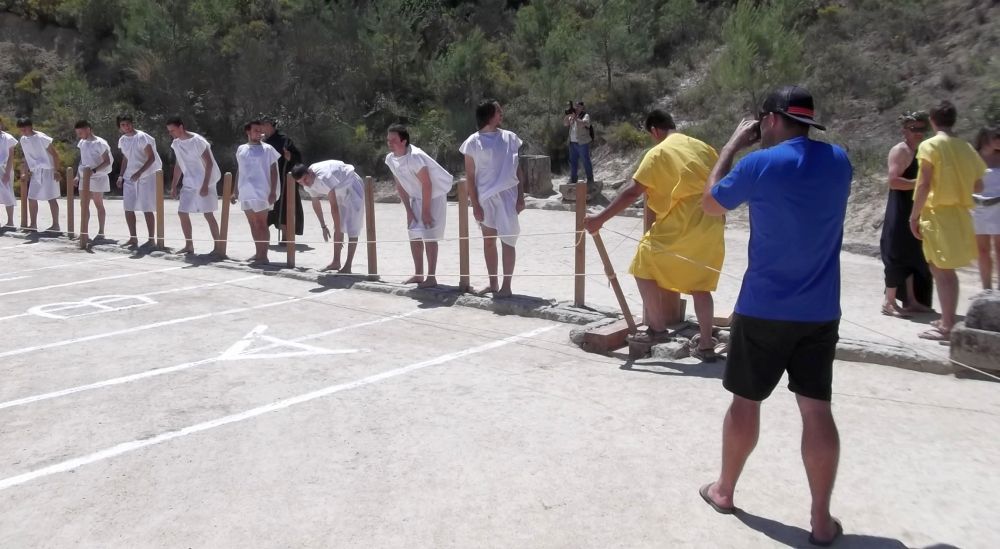
Raising the starting line before the race
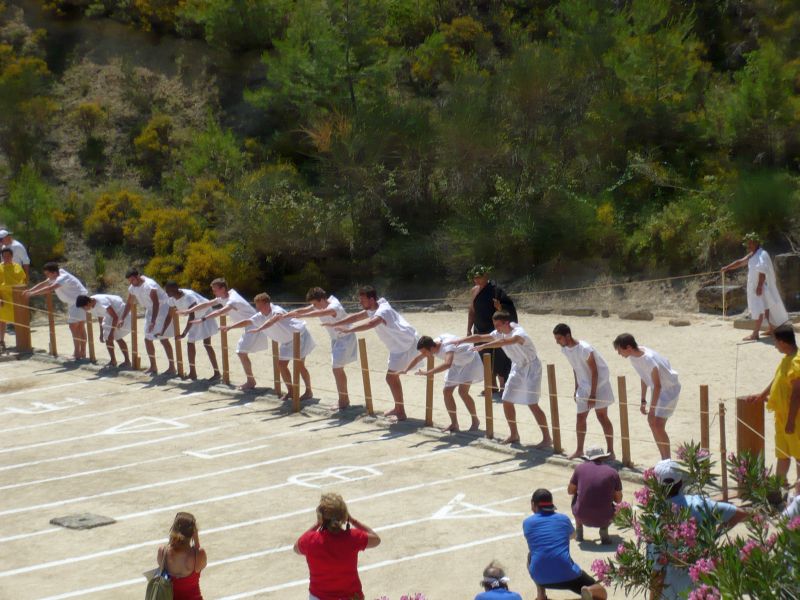
The
traditional starting position with outstreched arms
(demonstrating no interference with other runners)
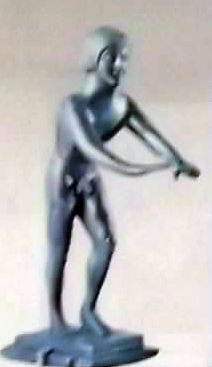
Ancient statue showing starting position
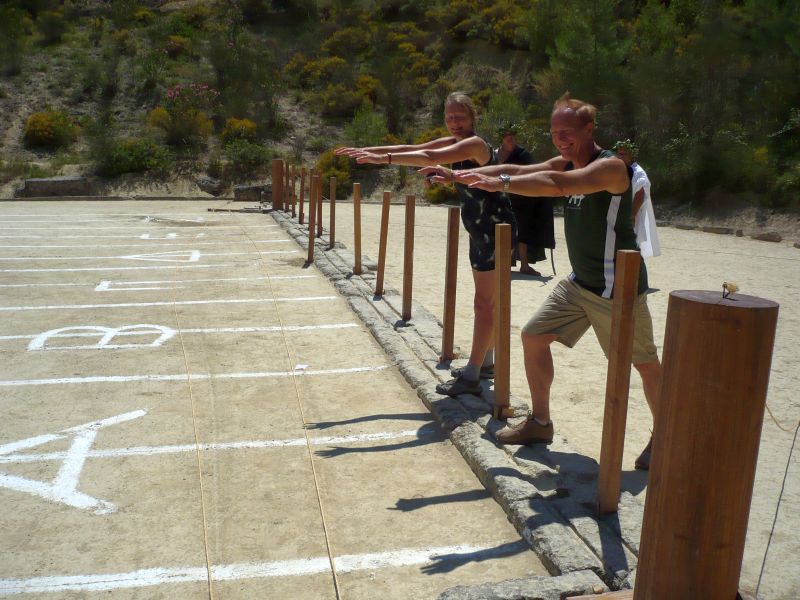
Mad Dog & sister Wendy on the starting line

The two strings are pulled together (far right) which drops the posts mechanism & the restraining cord
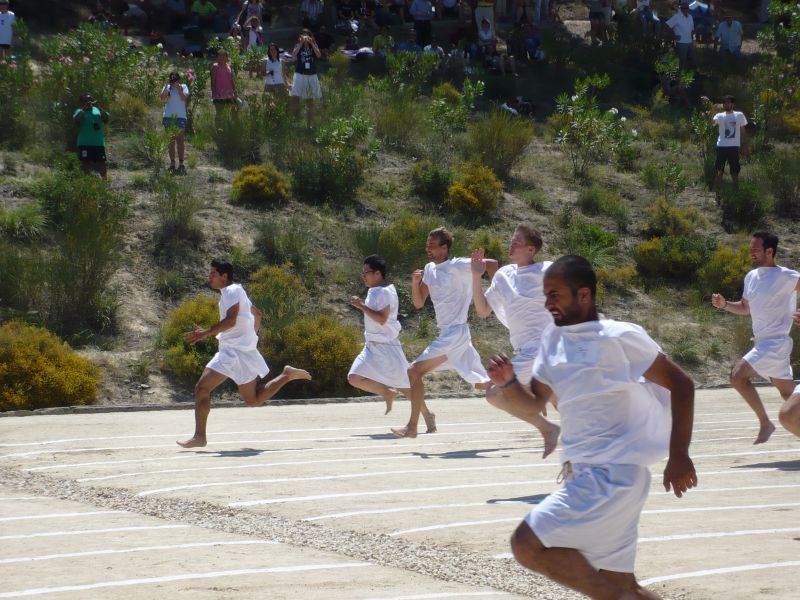
Runners in their Chitons (original runners ran naked and covered in olive oil)

Runners approaching the end posts

A young winner receiving a ribbon and palm frond
(2)
THE SANCTUARY & TEMPLE OF NEMEAN ZEUS (abt 330 BC)

The hashers approaching the temple through the extensive archaeological site

Shag & Doggy Style
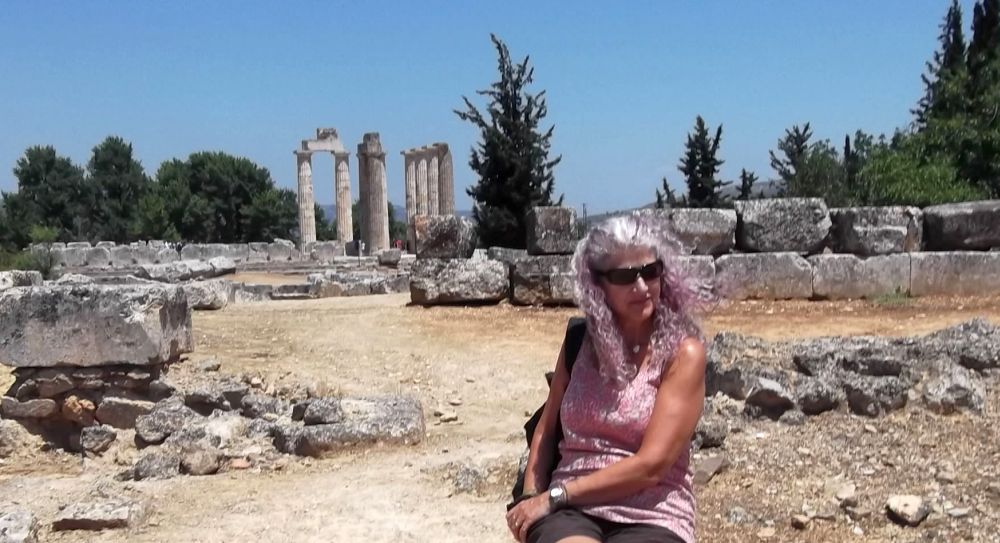
Clitoria & columns...could she be vestal virgin?
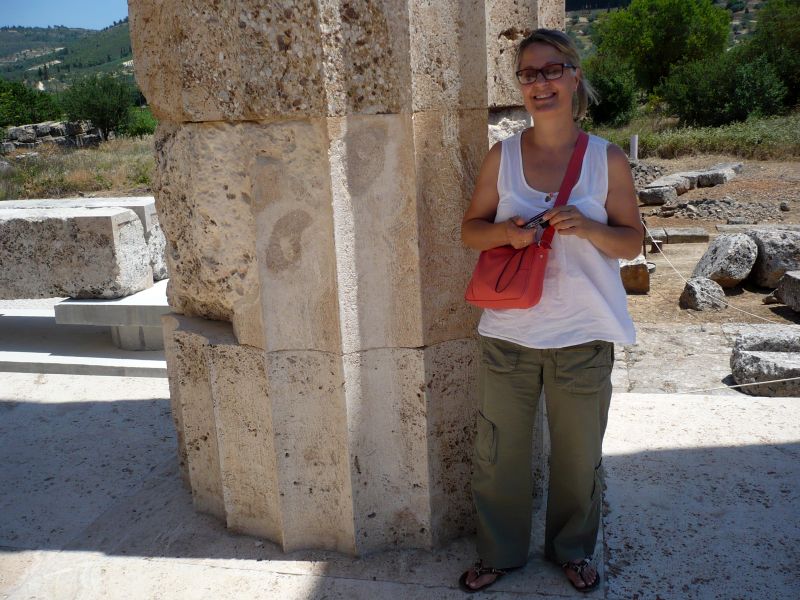
Shag & temple column

The
920 square metre Temple played a significant role in the Nemea Games, one
of the
original Pan-Hellenic Games of Ancient Greece.
It was before this Temple that, prior to the Nemea Games, the athletes would
pay homage
to the father of their gods, Zeus.
The
Temple’s construction included three Greek architectural forms,
the Doric, the Corinthian, and the Ionic.
The
reconstruction project is a costly venture with each column roughly costing
a
quarter–million euros.
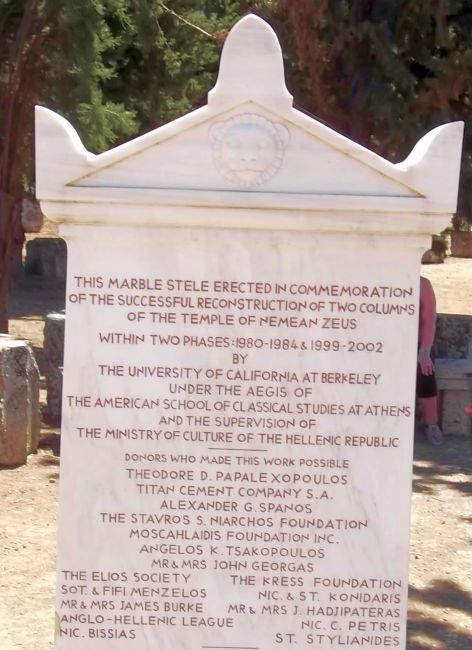

Information about the temple construction

Hashers take advantage of the shade of the trees


Mad Dog & Doggy Style
(Yes, I know - but the webmasturbator has to have some perks)

Diagram of the ancient baths where the naked athletes washed after the races
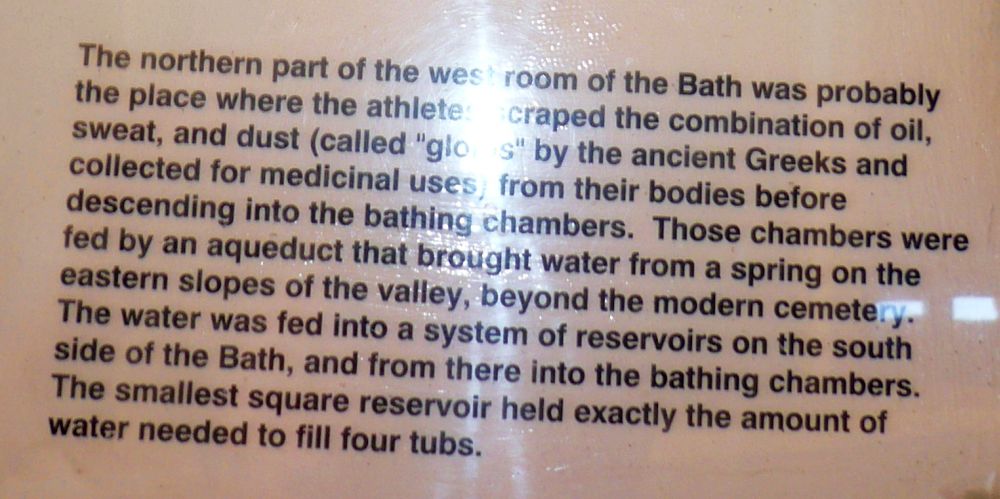

Four tubs

Tubs at the other end of the chamber

The baths were fed from an aquaduct from a spring on a local hill.
Here can be seen some of the original pipework

Hashers at the baths

Hashers visit the museum
In the foreground is a case showing amazingly fine pottery from the area made abt 6000 BC
(3) LUNCH AT THE SOUVLAKI TAVERNA

L-to-R:
Clitoria, Doggy Style, Mad Dog, Shag, Mountain Goat, Fair Cop, Wet Dream,
Wendy, Keith
The first of many beers we consumed - OK it was a very hot day
(4) THE PALIVOS WINERY VISIT

Well, it's not beer but in our defense it is a drinking club we belong to
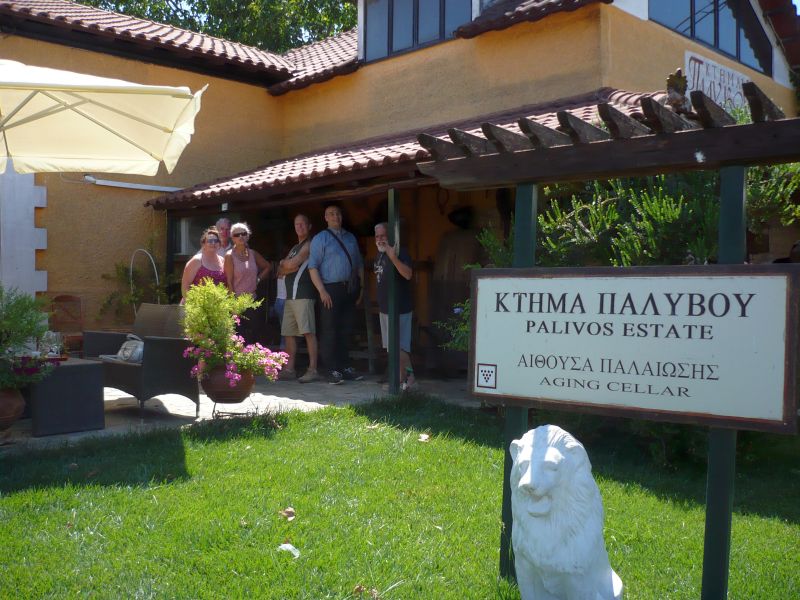
...or is it a photographic posing club??
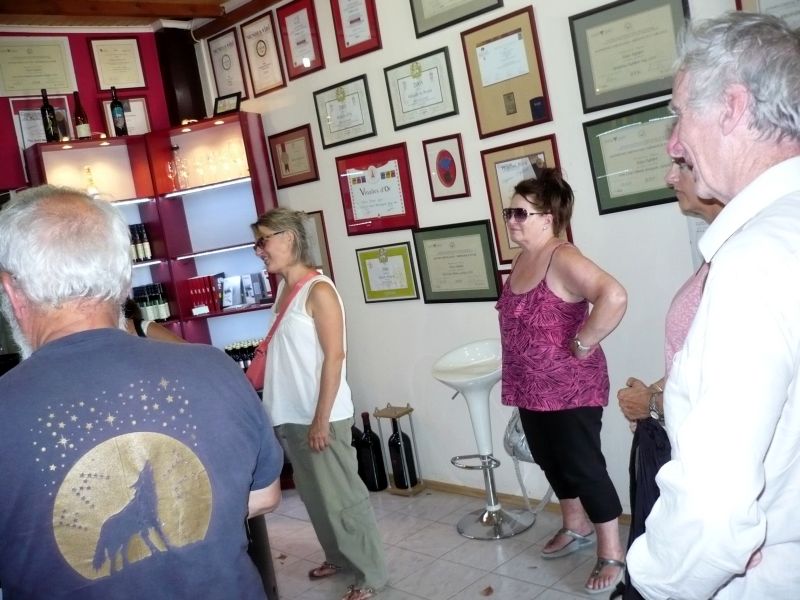
The tasting and purchasing room
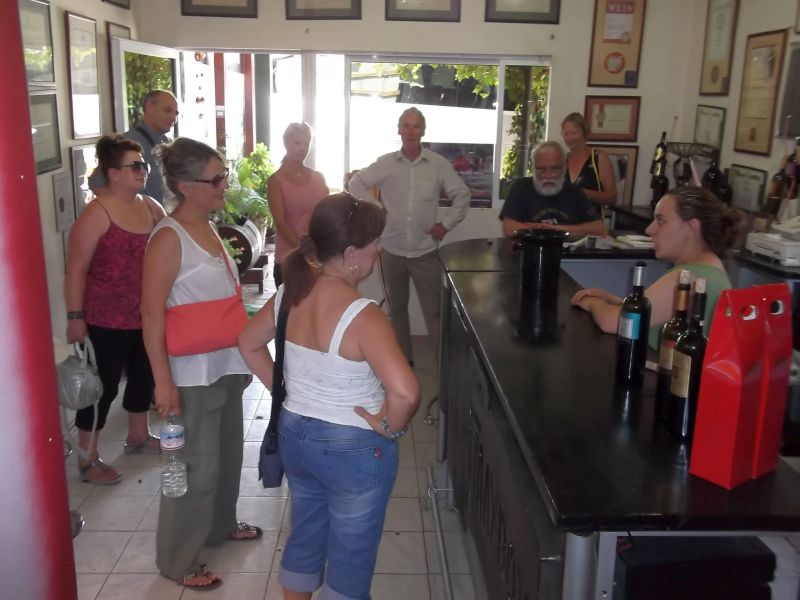
Start of the wine tasting

The wine pouring begins. Clitoria readies herself for the tasting.

Mad Dog & Fair Cop check out a wine vat
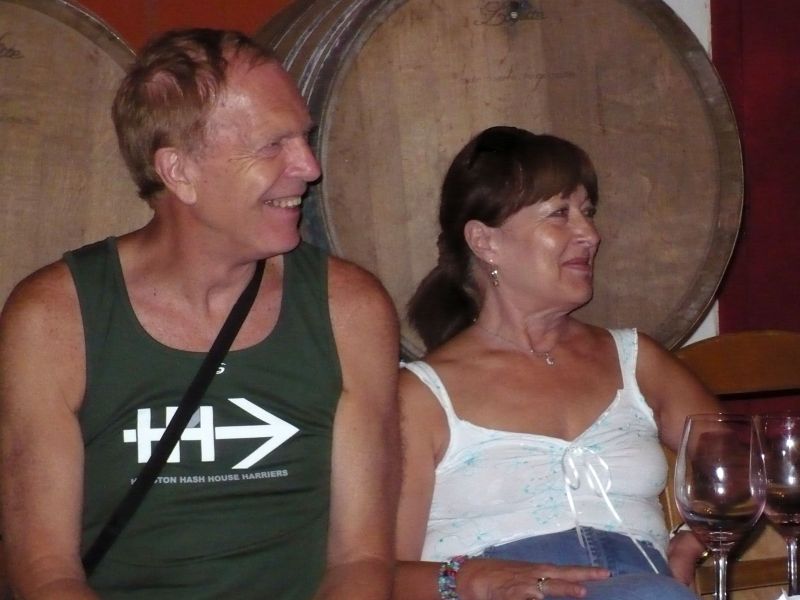
And then even more wine sampling inside the wine storage room
(5) THE CAFE

Just opposite the stadium is the cafe - a chance to offset all that alcohol with some caffeine


Young & high-spirited visitors from Georgia sing and dance at the cafe

NOTES
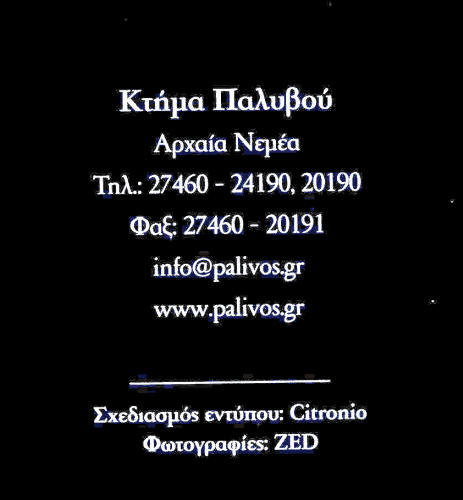
Palivos winery contact details
ANCIENT NEMEA
Where:
Nemea, Greece, is located about 25 kilometers southwest of Corinth in the northeastern part of the Peloponnesos in the foothills of the Arkadian Mountains at an elevation of about 340 meters above sea level. Average temperatures are relatively cooler than much of Greece, and we can anticipate warm, but not overwhelmingly hot, weather during the daytime on June 23. The nights can be chilly.
DIRECTIONS:
By private car takes about 1 1/2 hours from the center of Athens and follows the National Highway to Corinth (toll €3.10). Just past Corinth the highway splits: take the left fork goes toward Tripolis (toll €2.40). The second interchange after the toll booth is for Ancient Nemea, and there are signs thereafter for the archaeological site and museum.
Other attractions.
In addition to the ancient stadium, the archaeological site with the Temple of Zeus, ancient baths, and museum are about 400 meters from the stadium. Video tapes about ancient athletics will be shown at the office of the Society for the Revival of the Nemean Games about 500 meters from the stadium.
About 5 kilometers from the stadium to the west, on the road to Nea Nemea, is the picturesque medieval church of the "Virgin of the Bedrock" (Panaghia tou Vrachou) which clings to the side of a sheer cliff. North of Nea Nemea and 9 kilometers distant from the stadium is the ancient site of Phlious, a city-state which is largely unexcavated but the theater of which can be seen. Further to the west is the modern town of Aidonia where a Bronze Age cemetery has produced rich material on display at the museum of Ancient Nemea.
In the other direction, to the east in the next valley are the largely unexcavated remains of the ancient city of Kleonai. The Temple of Herakles with a large fragment from the torso of the cult statue is visible, and is the starting point for the 7.5 km. race back to Nemea.
To the southeast of Nemea and above the Nemea train station is the site of Dervenaki (6.8 kilometers from the stadium) where the Greek hero Kolotrones won perhaps the most significant land battle of the Greek War of Independence on July 26-28, 1822. His white marble statue is a conspicuous landmark.
Finally, the distinctive flat-top Mt. Phoukas (ancient Mt. Apesas, elev. 873 m.) about 6 kilometers north of the stadium beckons the sturdy hiker to a excellent view of the entire northeastern Peloponnesos.
AREA ATTRACTIONS
Several important archaeological sites are within a few minutes' drive of Nemea, They are listed here in alphabetical order.
ARGOS (south, 20 km.) Parts of the ancient town and its theater have been excavated, and the archaeological museum off the central square of Argos contains important material especially of the prehistoric and geometric periods.
ANCIENT CORINTH (northeast, 20 km.) The center of the ancient city visited by St. Paul has been uncovered, and the museum on the site reflects the wealth of Corinth in its two periods of particular importance: the Archaic and the Roman.
EPIDAUROS (southeast, 45 km.) The sanctuary of the healing god Asklepios is best known for its marvelous ancient theater, but its architectural monuments and their details are also beautiful, and its stadium important as being nearly contemporary with that at Nemea.
ISTHMIA (northeast, 30 km) The sanctuary of Poseidon hosted games which were, like the Nemean Games, a part of the panhellenic cycle. The small museum has several pieces of athletic gear, and the site shows the remains of an early, apparently unsuccessful, attempt to construct a starting mechanism.
LERNA (south, 30 km) A very important site for the architecture of the early Bronze Age.
MYCENAE (south, 10 km) The site of the palace of Agamemnon which has given its name to a golden prehistoric civilization. The massive Lion Gate and the incredible tholos tombs are the highlights.
NAUPLION (south-southeast, 30 km) The medieval fortifications above the city are its most impressive remains, but the archaeological museum on the main square of the town contains important prehistoric material.
TIRYNS (south-southeast, 25 km) A prehistoric site contemporary with but apparently subservient to Mycenae with impressive Cyclopean defensive walls.
WINE In addition to its antiquities, Nemea is well known for its indigenous Agiorgitiko (St. George) grape. The award-winning red wine produced from this grape is characteristically spicy with underlying plum notes. Its acidity is low, but it has excellent fruitiness and coloring. In recent years, a number of good white and rosé wines have been added to the local repertoire. There are many wineries, mostly family owned and operated, in the region, and many are open daily to the public for tasting and purchase. See further: http://www.pelopnet.gr/view_en.php?article=400#
More information at: www.nemeangames.org